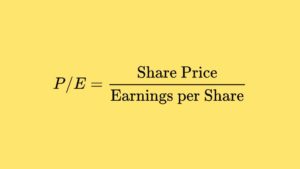The small cap indices outperformed the Sensex by big margins during the calendar years 2020 and 2021. Though both Sensex and BSE Small cap indices are down year-to-date in 2022, still the Small cap is marginally outperforming the Sensex. Interestingly, when we look back at the history of the last 18 years, rarely the Small cap index of BSE outperformed the Sensex beyond two years. Still, we believe that the Small Cap index will outperform the Sensex for a 3rd year in a row in 2022. The major reason for this conviction is a dichotomy between the behavior of FIIs and the domestic retail investors.
| Year-end Indices | ||||
| Year CY | Sensex | Annual Return | Small Cap | Annual Return |
| 2003 | 5,839 | – | 2,433 | – |
| 2004 | 6,603 | 13% | 3,432 | 41% |
| 2005 | 9,398 | 42% | 5,943 | 73% |
| 2006 | 13,787 | 47% | 6,892 | 16% |
| 2007 | 20,287 | 47% | 13,348 | 94% |
| 2008 | 9,647 | -52% | 3,683 | -72% |
| 2009 | 17,465 | 81% | 8,358 | 127% |
| 2010 | 20,509 | 17% | 9,670 | 16% |
| 2011 | 15,455 | -25% | 5,550 | -43% |
| 2012 | 19,427 | 26% | 7,380 | 33% |
| 2013 | 21,171 | 9% | 6,551 | -11% |
| 2014 | 27,499 | 30% | 11,087 | 69% |
| 2015 | 26,118 | -5% | 11,837 | 7% |
| 2016 | 26,626 | 2% | 12,046 | 2% |
| 2017 | 34,057 | 28% | 19,231 | 60% |
| 2018 | 36,068 | 6% | 14,707 | -24% |
| 2019 | 41,254 | 14% | 13,699 | -7% |
| 2020 | 47,751 | 16% | 18,098 | 32% |
| 2021 | 58,254 | 22% | 29,458 | 63% |
| 2022 ytd | 57,197 | -2% | 29,248 | -0.7% |
FIIs have sold nearly $16 billion worth Indian equities so far in 2022. In contrast, foreign investors have invested just $3.9 billion in 2021 in the domestic equities despite selling $6.8 billion worth of equities in the secondary markets as they have poured in a record $10.7 in the country’s primary market in 2021.
On the other hand, selling of Indian equities by the FIIs may continue for a few more months / quarters as high oil prices and hence, high inflationary scenario, and reversal of monetary policy by the US Fed would be the major concerns for the FIIs in the short-term. Historically, the reversal of monetary policy by the Fed leads to 3% to 5% depreciation of the Indian rupee. Hence, the FIIs may postpone their purchase of Indian equities till a major part of rate hikes / balance sheet reductions by the US Fed is executed. The FIIs may also wait till some resolution to the Ukraine – Russia war emerges. They are likely to invest significantly in the Indian equities only during the second half of CY2022.
Meanwhile, the retail investors may continue to pour into the markets and provide support to the small caps as they mostly focus on this segment always hoping for the faster returns. Hence, the small caps are likely to outperform the Sensex /NIFTY in 2022 also.
Major concerns for the FIIs in the short-term
High oil prices and hence, high inflationary scenarioReversal of monetary policy by the US FedThe reversal of monetary policy to 3% to 5% may lead depreciation of the Indian rupee.As a result
FIIs may postpone their purchase of Indian equitiesThe FIIs may also wait till resolution to the Ukraine – Russia warThey are likely to invest significantly in the Indian equities only during the second half of CY2022.
Small Cap Themes to Bank on
Total registered investor base, as of today, stands at around 10.35 crore- it is likely to breach the 12 crore mark by the end of CY2022 which would be roughly three times the whole market size, which was seen four years ago! This robust inflow of retail investors into the markets will boost the small cap segment. Year-to-date in 2022, the BSE Small cap index is outperforming the Sensex by 180 bps and this outperformance is likely to expand significantly over the next one to two quarters before the inflows from the FIIs come back to the Indian equities significantly. The retail investors can bank on the following five major themes within the small cap space:
Logistics
Robust external trades and PLI schemes are expected to improve the demand for logistics services. India’s external trade (exports plus imports) of goods exceeded $1 trillion for FY2022 and it is expected to continue to grow in strong double digits in FY2023 as well. This development is highly positive for the logistics business. Further, PLI (Production Linked Incentive) Schemes have reportedly drawn an overall investment of Rs.2.34 lakh crore so far. These investments are largely for the manufacturing sector, which is the backbone of the logistics sector. Hence, the demand for logistic sector is likely to be very robust over the next 1 to 3 years;
Public sector Undertakings (PSUs)
Big ticket divestments are slowly getting exhausted. Over the next one to two years, we can expect the government to start strategic sale of small cap PSUs engaged in mining, metal and logistics businesses. Many of them have already exhausted a large part of free cash also through buybacks and special dividends and hence, there is a strong case for their strategic sale. While an existing large industrial house engaged in metals is expanding the range of metals, another industrial house, never focused on metals, has floated a new metal company without any fixed assets. Hence, the competition to takeover the mining and metals companies owned by the government could get heated up as and when they are possibly put out for strategic sales. Similarly, almost all large industrial houses had entered the logistics sector and they would be keen to acquire the government-owned logistic companies for the inorganic growth.
Small Private Banks
Merger of HDFC Ltd. with HDFC Bank could be a game changer for the small private banks. One of the reasons cited by the management of HDFC Ltd. for the merger is that its lending book is more than Rs.50,000 crore and hence, it makes sense to merge with a bank. There are more than 6 NBFCs with lending books above RS.50,000 crore. Since most of them do not have access to cheap public deposits, a few of them may evaluate the possible option for merging them with a couple of century-old quality small private banks. In the process, the suppressed valuations of these old small private sector banks may improve in the short-term;
Mid-sized Land-bank Companies
Covid-19 pandemic led stimulus packages have resulted in the steep spikes in the prices of equity assets and, also in metals and in some natural resources. Now it is time for the land assets to see the impact of cumulative inflationary trends. Already in some major cities like Mumbai, the real estate prices have gone up by nearly 10% in the last few months. We expect land prices to rise further at least 20% in the next one to two years. Generally, the real estate asset is the last one to join the bubbles in the overall asset prices. Now it is time for the land bank stories to play out in a big way in the next one year.
Pharmaceutical companies focused on Export Formulations, backed by Captive APIs
While the domestic branded formulation companies (both listed and unlisted) command even up to 5 times valuation (of Enterprise value to annual sales), the export formulation companies do not enjoy anywhere near such premium valuations. As import dependence for the APIs is still heavy in India, the companies, which export formulations with help of their own backward-integrated captive APIs, are likely to see significant upgrades in their market valuations. Recent rupee depreciation also augurs well for them in terms of using their captive APIs instead of importing them. Using precious captive APIs ultimately has to be captured in the valuation of final export formulations, which are getting poor market valuations at present.
FIIs are expected to return in a significant way to the domestic equities in the second half of FY2023 (from Q3CY2022). Though the economic growth rate of India is revised downwards, it would still be the fastest among the major economies in the world. By end of Q3FY2023, the global equities would have largely discounted the reversal of monetary policy by both the US Fed and the European Central Bank, leading to stabilization of rupee.
Further, success of all three crops in the current crop year and anticipated normal performance from the forthcoming monsoon, robust tax collections, positive impact of PLI schemes, solid export growth, anticipated robust FDI inflows, etc. would ultimately reverse the inflows from the FIIs by end of Q3FY2023.
In the meanwhile, however, the small cap stocks are expected to continue to do well. Hence, for the third year in a row, 2022 would see a solid outperformance of the small caps.
The retail investors can bank on those 5 themes highlighted above.
Risk to our robust view on small cap space would be –
- Any possibility of serious war in Ukraine continuing throughout 2022 and hence, crude oil price staying substantially above $110 a barrel for another 2 to 3 quarters.
- Also, any possibility of NATO and China joining the Ukraine war directly would be a major risk factor for the whole equity asset class including the small cap segment.
























